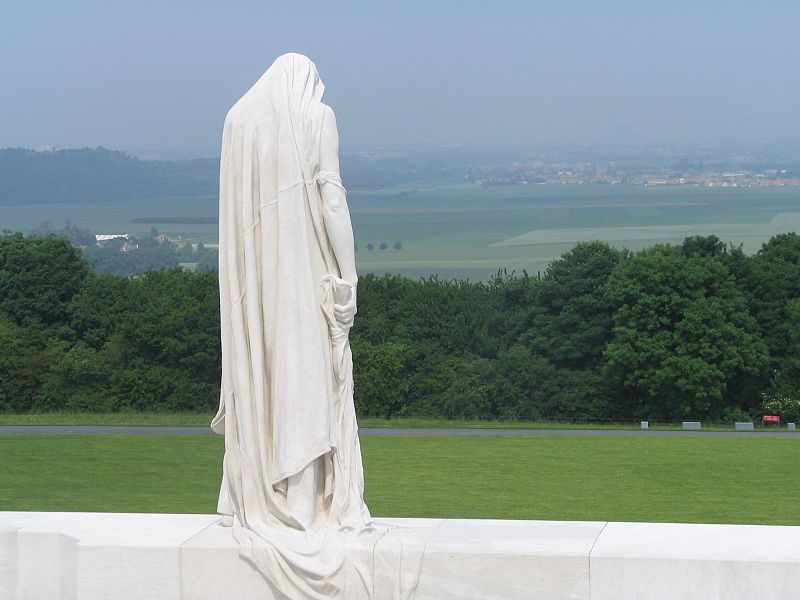A gap between the present and the past? — Historical distance and history education part II
12 May 2015 - 12:48am

In my last blog post, I highlighted the thinking of various historical schools on historical distance. The review highlighted distance as a temporal (time based) entity from which the historian could best study the events of the past. However, as Phillips (2004) pointedly argues, there is no best position from which to view the past, and historical distance is not just given to historians and readers alike; rather, is is constructed in a multitude of ways.
The concept of historical distance is more complex than the conventional time-object relationship. Numerous forces that derive from human desire to “engage with the historical past” (p. 14) shape time. A person’s temporal proximity to the past is influenced by categorizations of historical distance, which therein affect the length of temporal distance between the past and the present (Phillips, 2013). In the following discussion, distance is not only created in written historical accounts and narratives but most explicitly in memorials, films, and a variety of other genres.
First, the ideological position of a historian influences their construction of the temporal distance from a past event. Readers of history are often attracted to texts or works that match political or ideological expectations (Phillips, 2004). Academic as well as popular histories are not purely objective and void of ideological motivations. Often, historical accounts are loyal to party, place and therefore support some form of ideology. Support of a certain position whether political or ideological increases or decreases ones proximity to the past.
The affective implications of a historical representation position the historian to an event (either further or closer) based on emotional proximity. The historian uses language or other formal devices, to increase or decrease the temporal distance of a reader to a historical account or even something like a memorial. We may read a text, which is very emotional, and thus we decrease the distance to the historical event or we may feel repulsed by the description and enlarge the distance. We may visit a memorial and similarly be affected, thus changing our proximity ot the events of the past. In other words, how we are affected by a trace from the past or a historical account position temporally.
Third, the formal or linguistic traits of a historical representation (language, artistic traits, cinematic effects, etc.) increase or decrease historical distance. In other words, the linguistic forms employed by an author in their construction of an historical account influences the reader’s proximity to or distance from the past.
It is necessary to study the linguistic features used by historians and how this creates historical distance. In historical accounts, “the functioning of language and the situational context play their parts in the process of distance creation,” (Zeleák, 2011, p. 73) and “the creation of a particular historical distance depends on mechanisms operating ‘within the text’” (p. 73) Specifically, Zeleák argues that historical writing posses either a direct reference view (referential view) or indirect reference view. Each of these views then constructs a proximity or distance from a past event.
Referential view is based on the notion that “expressions are directly linked to their referents, to the ‘things’ in the world they are about” (p. 70). In other words, such an example as “Rome” indicates a linguistic item and its referent (an object), the city (Zeleák, 2011). A referential perspective “directly depicts past happenings,” and there is no need for mediation between past reality and the historical text. The referential view linguistically eliminates the historical distance between past events and the present historical texts.
Indirect reference allows for distance between a text and past reality. Indirect reference indicates the existence of “an expression, a referent, and a ‘middleman’”(p. 70), between the past and its textual representation in the present; therefore, a linguistic expression can never be attributed directly to a referent in the past and it always related via a constructed meaning (Zeleák, 2011). Indirect reference according argues that a historian cannot “jump linguistically” into the past and portray it as reality.
I have detailed above two things, one, how various traits within historical texts can affect historical distance; two, how historians and readers construct historical distance based on these traits. Historical distance is not merely given to the historians or their audience but is simultaneously constructed (Phillips, 2004).
Distance is complex and deserves to be treated as so by historians, educators and students. This series of posts is simply an invitation to thinking around historical distance. In Part III I will look at the implications of historical distance for history education.
Works cited:
Phillips, M. S. (2004). History, memory and historical distance. In P. Seixas (Ed.), Theorizing historical consciousness (pp. 86-102). Toronto: University of Toronto Press.
Phillips, M. S. (2013). On historical distance. New Haven: Yale University Press.
Zeleák, E. (2011, December). Indirect reference and the creation of distance in history. History and Theory, Theme Issue, 50, 68-80.
Photo:
Author: Cbone, June 8th, 2008.

